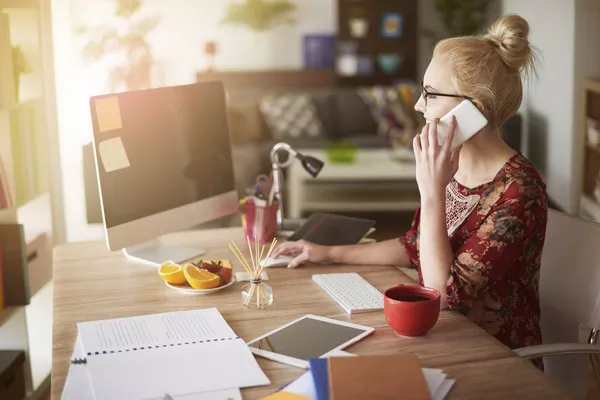Anxiety, a common mental health condition, affects millions of people worldwide. It can be debilitating, impacting one’s ability to function effectively in daily life. However, there are strategies to train your brain to stop anxiety. By understanding the mechanisms of anxiety and implementing effective techniques, you can reduce its grip on your life.
Understanding Anxiety: The Basics
Anxiety is a natural response to stress or perceived threats. It’s characterized by feelings of worry, nervousness, or fear. While occasional anxiety is normal, chronic anxiety can be overwhelming and interfere with daily activities. The brain’s response to anxiety involves the amygdala, which processes emotions, and the prefrontal cortex, responsible for decision-making and rational thought. When anxiety occurs, the amygdala sends distress signals, which can overpower the rational thinking of the prefrontal cortex.
Identifying Anxiety Triggers
The first step in training your brain to stop anxiety is identifying your anxiety triggers. Triggers can be specific situations, people, or environments that cause anxiety. Keeping a journal to note when and where your anxiety occurs can help identify patterns. Once you recognize your triggers, you can begin to address them directly.
Common Anxiety Triggers
- Stress at work or school
- Financial worries
- Health concerns
- Relationship issues
- Past traumatic experiences
- Social situations
Cognitive Behavioral Therapy (CBT)
Cognitive Behavioral Therapy (CBT) is a widely recognized and effective treatment for anxiety. It involves identifying and challenging negative thought patterns and behaviors that contribute to anxiety. CBT helps reframe these thoughts and encourages positive behaviors.
Techniques in CBT
Cognitive Restructuring: Identifying and challenging irrational thoughts.
Exposure Therapy: Gradual exposure to anxiety-provoking situations.
Relaxation Techniques: Breathing exercises, progressive muscle relaxation.
Behavioral Activation: Engaging in activities that bring pleasure or a sense of accomplishment.
Mindfulness and Meditation
Mindfulness and meditation are powerful tools for managing anxiety. These practices help focus the mind on the present moment, reducing the tendency to ruminate on past or future worries. Regular practice can lead to structural changes in the brain, promoting a state of calm and reducing anxiety.
Mindfulness Techniques
Mindful Breathing: Focusing on the breath to anchor the mind.
Body Scan Meditation: Paying attention to different parts of the body and relaxing them.
Mindful Walking: Observing the sensations and surroundings while walking.
Loving-Kindness Meditation: Cultivating feelings of compassion and kindness towards oneself and others.
Physical Exercise
Physical exercise is not only beneficial for physical health but also for mental health. Regular exercise releases endorphins, which are natural mood lifters. It also reduces levels of the stress hormone cortisol, helping to alleviate anxiety.
Types of Exercise for Anxiety
Aerobic Exercise: Running, swimming, cycling.
Strength Training: Weightlifting, resistance exercises.
Yoga: Combines physical postures, breathing exercises, and meditation.
Tai Chi: Gentle, flowing movements combined with deep breathing.
Healthy Lifestyle Choices
Making healthy lifestyle choices can significantly impact anxiety levels. A balanced diet, adequate sleep, and avoiding substances that can exacerbate anxiety, such as caffeine and alcohol, are essential.
Dietary Considerations
Omega-3 Fatty Acids: Found in fish, flaxseeds, and walnuts, they help reduce inflammation and support brain health.
Antioxidants: Foods rich in antioxidants, like berries, nuts, and green leafy vegetables, protect the brain from oxidative stress.
Hydration: Staying hydrated is crucial for optimal brain function.
Avoiding Stimulants: Caffeine and sugar can increase anxiety symptoms.
Developing a Support System
Having a strong support system can provide comfort and reduce feelings of isolation. Friends, family, and support groups can offer emotional support and practical advice for managing anxiety.
Ways to Build a Support System
Join Support Groups: Online or in-person groups for people with anxiety.
Communicate Openly: Share your feelings with trusted friends or family members.
Seek Professional Help: Therapists, counselors, and mental health professionals can provide specialized support.
Breathing Techniques
Controlled breathing exercises can activate the body’s relaxation response and reduce anxiety. These techniques are simple to learn and can be practiced anywhere.
Effective Breathing Techniques
Deep Breathing: Inhale deeply through the nose, hold for a few seconds, and exhale slowly through the mouth.
4-7-8 Breathing: Inhale for 4 seconds, hold for 7 seconds, and exhale for 8 seconds.
Box Breathing: Inhale for 4 seconds, hold for 4 seconds, exhale for 4 seconds, and hold for 4 seconds.
Progressive Muscle Relaxation
Progressive Muscle Relaxation (PMR) involves tensing and then relaxing different muscle groups in the body. This technique helps reduce physical tension and promotes relaxation.
Steps in PMR
1. Find a Comfortable Position: Sit or lie down in a quiet place.
2. Tense a Muscle Group: Start with your feet and work your way up.
3. Hold the Tension: For about 5-10 seconds.
4. Release the Tension: Notice the difference between tension and relaxation.
5. Move to the Next Muscle Group: Gradually work through the entire body.
Visualization and Guided Imagery
Visualization and guided imagery involve imagining a peaceful scene or situation. This technique helps distract the mind from anxiety and promotes a sense of calm.
How to Practice Visualization
Find a Quiet Space: Sit or lie down in a comfortable position.
Close Your Eyes: Take a few deep breaths.
Imagine a Peaceful Scene: It could be a beach, a forest, or any place that makes you feel calm.
Engage Your Senses: Imagine the sights, sounds, smells, and sensations of the scene.
Stay in the Scene: For as long as you feel comfortable, allowing yourself to relax.
See Also: How to Take Time Off with Stress and Anxiety?
Journaling
Journaling can be an effective way to process emotions and reduce anxiety. Writing about your thoughts and feelings helps externalize them, making them less overwhelming.
Tips for Journaling
Set Aside Time: Choose a regular time each day to write.
Write Freely: Don’t worry about grammar or spelling; focus on expressing your thoughts.
Reflect on Your Entries: Look back on your entries to identify patterns and progress.
Use Prompts: If you’re unsure what to write, use prompts like “Today I feel…” or “What worries me is…”
Limiting Exposure to Stressors
Reducing exposure to stressors can help manage anxiety. This may involve setting boundaries, saying no to additional responsibilities, or avoiding situations that trigger anxiety.
Strategies to Limit Stressors
Prioritize Tasks: Focus on what’s most important and let go of non-essential tasks.
Set Boundaries: Communicate your limits to others.
Delegate Responsibilities: Share tasks with others when possible.
Take Breaks: Schedule regular breaks to relax and recharge.
Seeking Professional Help
If anxiety is severe or persistent, seeking professional help is crucial. Mental health professionals can provide therapy, medication, or a combination of both to manage anxiety effectively.
Types of Professional Help
Therapists and Counselors: Provide talk therapy, such as CBT.
Psychiatrists: Can prescribe medication for anxiety.
Support Groups: Offer a sense of community and shared experiences.
Online Resources: Many mental health organizations offer online support and resources.
Practicing Gratitude
Practicing gratitude involves focusing on the positive aspects of your life. This practice can shift your mindset from worry to appreciation, reducing anxiety.
How to Practice Gratitude
Keep a Gratitude Journal: Write down three things you’re grateful for each day.
Express Gratitude: Thank others for their kindness.
Reflect on Positive Experiences: Spend time thinking about good moments in your life.
Visual Reminders: Place reminders of things you’re grateful for around your home.
Conclusion
Training your brain to stop anxiety involves a combination of strategies and techniques. By understanding the nature of anxiety, identifying triggers, and implementing practices such as CBT, mindfulness, exercise, and healthy lifestyle choices, you can significantly reduce anxiety. Developing a strong support system, practicing relaxation techniques, and seeking professional help when needed are also crucial steps. Remember, managing anxiety is a journey, and with persistence and dedication, you can achieve a calmer, more balanced life.
Related topics:
























